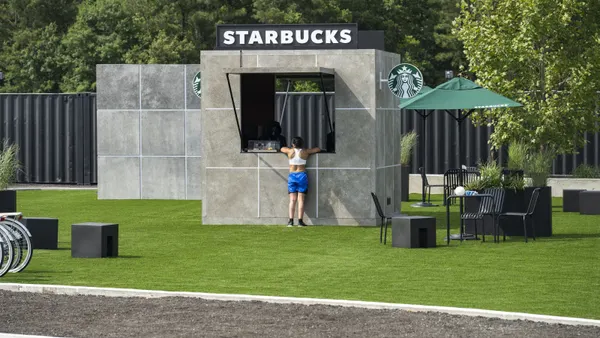Football is an advertising magnet. Just take Super Bowl advertisements, which for the 2023 game went for as much as $7 million. And while the NFL has been known to rake in massive advertising revenue, college football has also continued to rise in popularity for both consumers and marketers. Over Thanksgiving weekend, retail ads that aired during college football showdowns on Saturday were 5% more likely to generate engagement online compared to the primetime average for retail brands, according to EDO data shared with Marketing Dive.
The data from EDO, a TV outcomes company, found that, despite shifting consumer habits around holiday shopping, Thanksgiving weekend and the football frenzy tied to it remain a major marketing opportunity. Notably, the first-ever NFL Black Friday game, which aired on Amazon Prime, performed well for advertisers: Consumers who saw a retail ad during the game were 35% more likely to engage compared to the retail primetime average, per the company.
Additionally, consumers were 73% more likely to engage online with retail ads aired during Thanksgiving and Black Friday NFL games this year compared to the retail primetime average. Viewers also engaged with these advertisements 45% more than for ads appearing during this NFL season to date.
“We saw a particularly strong performance on the Black Friday game, the new game airing on Amazon. Of course, that was ranked really high on average,” said Laura Grover, senior vice president and head of client solutions at EDO. “We saw that, across all advertisers, consumers were 58% more likely to engage with an ad on NFL on Amazon Prime, the Black Friday game, versus your typical non-live sports primetime airing.”
To better understand advertising trends over the Thanksgiving holiday weekend, EDO looked at search activity, among a number of other success metrics, to determine the top performers over the period. Industries evaluated spanned the retail, automotive and wireless provider categories.
Touchdown for marketers
Walmart’s cheeky “Mean Girls” campaign for Black Friday was a success, with the retail giant seeing a 64.5-times boost in ad engagement overall when compared to others who advertised over the holiday weekend. In total, the retailer had 11 airings during Thanksgiving and Black Friday NFL broadcasts. Behind Walmart, Dick’s Sporting Goods delivered 41.3-times more engagement than the average brand advertising that weekend. In total, the sporting goods store had eight airings total over the period.
“Two ads for Walmart were among the top-performing creatives in NFL games over the holiday weekend. And what I thought was interesting about the Walmart ad, the one that performed the most strongly, [was that] it was very promotion-focused,” said Grover.
College football also had a big weekend, with retail ads during “highly anticipated” match-ups driving 13% more online engagement than those run throughout the college football season so far, EDO found. Some games outshined others, with the Ohio State versus Michigan game coming out on top. Consumers viewing this game were 173% more likely to engage with brands compared to the average college football Saturday games going on Thanksgiving weekend.
“When you think about college football, there’s obviously a lot more games every weekend,” said Grover. “It becomes very lineup-dependent, but they can be as impactful as an environment like the NFL.”
That insight could explain why some brands have upped their investment in the collegiate sport. For instance, alcohol giant Molson Coors doubled down on college football in August with an expanded marketing playbook, while Bud Light tapped into the hype by expanding its roster of limited-edition team cans and offering a Backyard Tour concert series targeting college towns. Other verticals have also attempted to cement their role in the sport as they strive to resonate with consumers, Grover explained.
“I think advertisers are going to go wherever they’re going to find consumers engaging with ads,” said Grover. “I think there’s a lot of big names already invested heavily in college football — insurance brands come to mind as ones that have a really big presence, and I think we'll continue to see that.”













